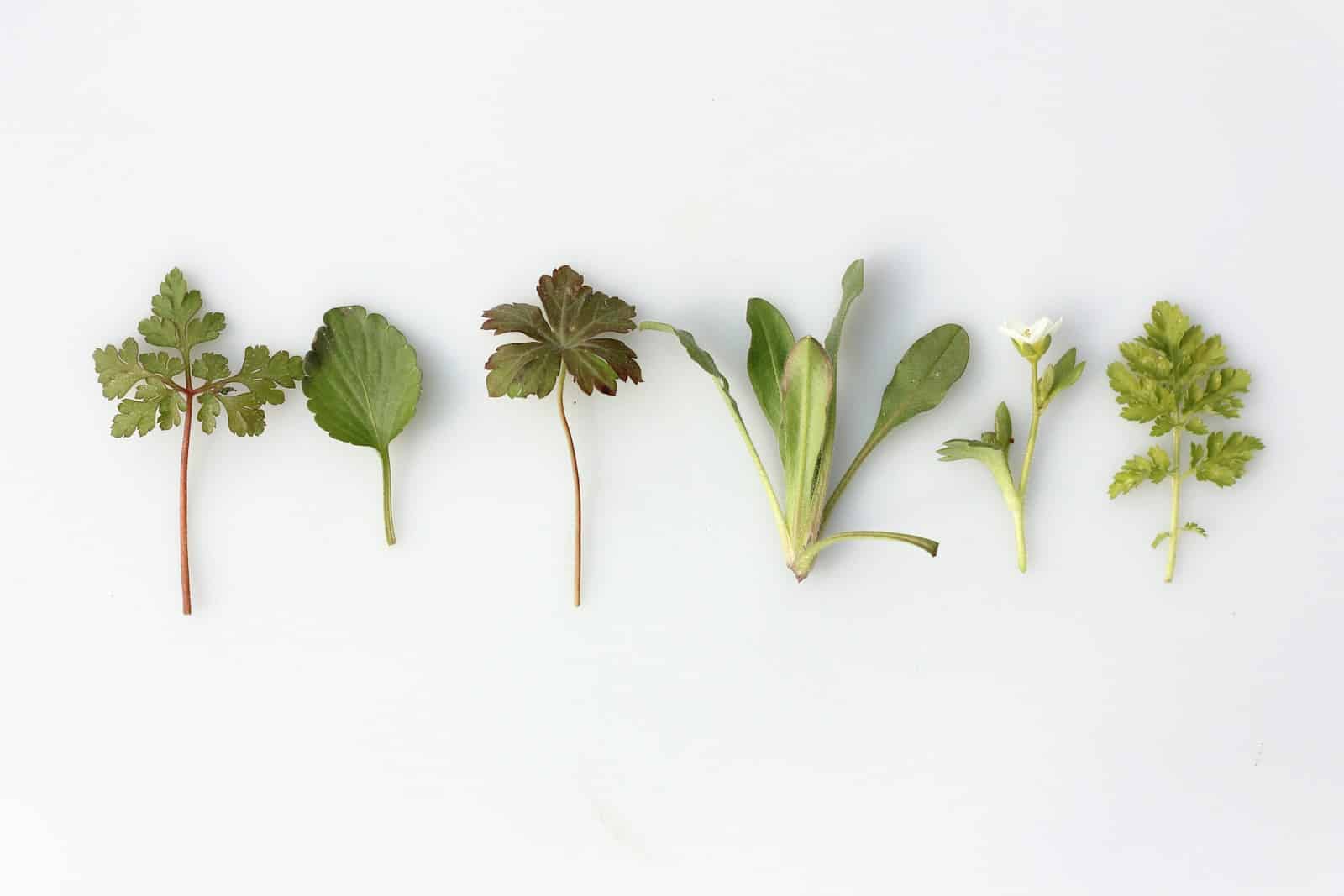The art of cooking with aromatic herbs

In the world of culinary arts, the use of aromatic herbs is a staple. This practice effortlessly bridges the gap between ordinary and extraordinary cooking by amplifying the flavors of your dishes. Herbs like fresh basil, rosemary, and mint are not just garnishes on your plate. They are key elements that can transform your cooking into a sensory experience, offering a unique blend of taste, aroma, and even health benefits. This article explores the art of cooking with aromatic herbs, focusing on the Greek style of using herbs, and offering some recipes for you to try.
Unleashing the Power of Aromatic Herbs in Your Kitchen
Aromatic herbs have been an integral part of culinary practices for centuries. They are known for their ability to add a burst of flavor to any dish. A sprinkle of finely chopped fresh basil can uplift a simple tomato soup, while a sprig of rosemary can make your roast chicken the star of the Sunday lunch. Like the conductor of an orchestra, herbs bring all the different components of a dish together, creating a harmonious symphony of flavor.
En parallèle : Slow cooker success: set it and forget it recipes
In your culinary journey, you may have come across several herbs. Each herb has its unique character, with its flavor profile and aroma. When used appropriately, these herbs can dramatically enhance the taste of your food. For instance, Greek cooking, in particular, is renowned for its liberal use of aromatic herbs like oregano, thyme, and mint. They are used in a variety of dishes, from salads and stews to grilled meats and fish, providing a distinctive flavor that is inherently Greek.
The Versatility of Fresh Herbs: From Basil to Rosemary
Next, let’s delve into the world of specific aromatic herbs, starting with basil. Basil, with its sweet, peppery taste, is an essential ingredient in Italian cuisine. It’s used in dishes like pasta, pizza, and many others. Fresh basil is also the main ingredient in pesto, a rich, green sauce that’s an absolute treat for the palate.
Avez-vous vu cela : The art of making traditional indian sweets
Another herb which is prized for its versatility is rosemary. This herb, with its strong, slightly piney flavor, is commonly used in Mediterranean cuisine. Rosemary is excellent with grilled meats, especially lamb and chicken. It also adds a beautiful flavor to bread, soups, and vegetable dishes.
Lastly, mint offers a fresh, cool flavor that is quite distinct. It is often used in desserts and beverages for a refreshing touch. However, its use is not confined to sweet dishes alone. In Greek cooking, mint is incorporated in savory dishes like lamb, peas, and cheese-based dishes.
Cooking with Aromatic Herbs: A Few Recipes to Try
Now that you’re familiar with the versatility of these herbs, let’s explore some recipes where you can put your newfound knowledge to use. One classic dish where the flavors of herbs shine through is Greek Tzatziki. This is a cucumber and yogurt based dip, flavored with a generous amount of fresh mint.
Another recipe is a simple Basil Pesto Pasta. For this, you’d need a handful of fresh basil leaves, pine nuts, garlic, Parmesan cheese, and olive oil. These ingredients are blended together to form a vibrant, green sauce that’s tossed with cooked pasta. The result is a delicious dish where the flavor of fresh basil is the star.
Lastly, a Rosemary Lemon Roast Chicken, where the chicken is marinated with a concoction of lemon juice, garlic, and fresh rosemary. This imparts a beautiful flavor to the chicken, making it a winner at your dinner table.
Aromatic Herbs in Books: Learning from the Experts
There are several books available that can guide you in the art of cooking with herbs. One such book is "The Herb Society of America’s Essential Guide to Growing and Cooking with Herbs" (ISBN: 9780807132611). This book provides a comprehensive guide to growing, harvesting, and cooking with herbs. The recipes included in the book help you learn how to use herbs to enhance the flavor of your dishes.
Another book to consider is "The Flavor Bible: The Essential Guide to Culinary Creativity" (ISBN: 9780316118408). The authors explore the world of flavor pairings and provide a guide on how to pair different ingredients, including herbs, to create delicious, flavorful dishes.
Growing Your Own Aromatic Herbs: The Joy of a Herb Garden
There’s something immensely satisfying about using herbs that you’ve grown in your own garden. The convenience of plucking fresh herbs from your window box or backyard garden ensures you have the freshest possible flavor at your fingertips. Plus, the process of nurturing these plants can be a therapeutic experience in itself.
Starting your own herb garden is relatively easy. Herbs like basil, rosemary, and mint are hardy plants and can be grown from seeds, cuttings, or small plants purchased from a garden center. With a little care and attention, you’ll have a flourishing herb garden in no time.
To recap, the use of aromatic herbs in cooking adds another dimension to your dishes. It brings out a depth of flavor and a burst of freshness that is hard to achieve with other ingredients. So, embrace the art of cooking with aromatic herbs, and let your culinary creations wow your friends and family!
A Library of Culinary Arts: Aromatic Herbs in Antiquarian Collectible Books
Delving into antiquarian collectible books on aromatic herbs offers a window into the history of culinary arts. These books are a treasure trove of information, offering traditional cooking techniques, forgotten recipes, and a deeper understanding of how herbs have shaped our culinary landscape.
One such book is "Herbs: Their Cultivation and Usage" by John B. Hemphill, published by Bantam in 1973 (ISBN: 0553082110). This book not only provides an overview of various types of herbs, but it also explains how to use them as cooking seasoning. Hemphill discusses the importance of fresh herbs in cooking and the unique flavor profiles they bring to dishes. You can find this book in the Bantam library, and if it is not available, it can be ordered from the contact seller option.
Another important resource is "The Complete Book of Herbs: A Practical Guide to Growing and Using Herbs" by Lesley Bremness, published by Bantam in 1988 (ISBN: 0553349302). This book goes beyond cooking with herbs, discussing their historical uses, medicinal properties, and even their role in traditional rituals.
These antiquarian collectible books serve as a window tab into the past, helping us appreciate the value of herbs in the culinary arts. They emphasize the importance of cooking with fresh herbs, not just as a seasoning for foods, but also as a way to enhance the overall dining experience.
Basket of Aromatic Herbs: Plating and Presentation in the Culinary Arts
Using herbs in cooking is not just about enhancing the flavor of dishes, it also opens up a window of creativity in plating and presentation. It’s like adding that final touch to the canvas that makes the picture complete.
Fresh herbs like parsley, basil, or cilantro, when used as garnish, can bring a pop of color to your plate, making your dishes visually appealing. Additionally, herbs like dill or mint can be used to create delicious and attractive sauces that add an element of sophistication to your dishes.
For example, consider a simple dish of grilled chicken. By itself, it may seem ordinary. But add a sprig of rosemary, a drizzle of basil-infused oil, and a side of minty peas, and you’ve transformed an everyday meal into a gourmet dish.
However, remember that less is more when it comes to plating and presentation. You don’t want to overwhelm the dish with too many elements. Let the herbs accentuate the dish, not overshadow it.
Conclusion: The Window to Culinary Excellence – Cooking with Aromatic Herbs
To conclude, the art of cooking with aromatic herbs is not merely a technique but a journey into the vibrant world of flavors. It opens a window to creative expression in the kitchen, allowing you to explore different flavor profiles and create dishes that are a feast for the senses.
From basil to rosemary, from mint to thyme, each herb carries with it a unique character that can transform a dish. Whether you’re stirring up a classic Tzatziki, simmering a pot of tomato basil soup, or roasting a chicken with rosemary and lemon, fresh herbs are your key to unlocking extraordinary flavors.
Moreover, these aromatic herbs are not just confined to your kitchen. Growing your own herb garden can be a fulfilling experience, providing you with a ready supply of fresh ingredients. And delving into antiquarian collectible books on herbs can deepen your understanding of their culinary and cultural significance.
Therefore, embrace the world of aromatic herbs, explore the myriad of flavors they offer, and let your culinary creations tell a story. After all, as the famous saying goes, "Cooking is like painting or writing a song. Just as there are only so many notes or colors, there are only so many flavors – it’s how you combine them that sets you apart."
